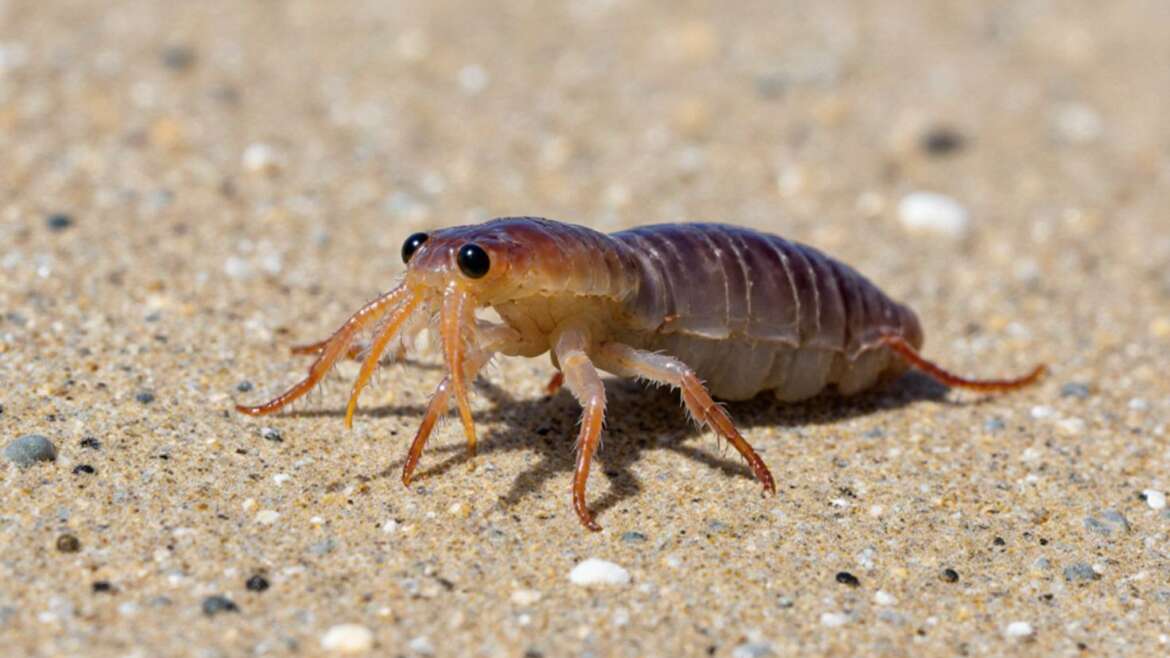Sand fleas, also referred to as beach fleas, sand hoppers, or beach hoppers, are small, leaping crustaceans that belong to the family Talitridae and the order Amphipoda. Despite their name, sand fleas are not actually fleas or insects. These tiny crustaceans resemble shrimp and are commonly found in moist, sandy habitats such as beaches.
Several pests are often confused for sand fleas, which leads to misunderstandings about their behavior and potential for biting. These include:
- Sand flies: Actual flies that bite and consume blood.
- Tunga penetrans: Known as chigoe fleas or “true” sand fleas, these parasitic insects can burrow into skin, particularly in tropical regions like South America and parts of Africa.
- Other small beach-dwelling insects or mites that may cause bites or irritation.
While all these creatures are arthropods, they are not closely related. The confusion regarding these pests, especially the biting habits of chigoes and sand flies, has led to a widespread but erroneous belief that sand fleas (Talitridae) bite humans. In actuality, sand fleas do not bite.
What do sand fleas look like?
Sand fleas are small, shrimp-like crustaceans. Here’s a description of their appearance:
- Size: Typically, they measure about one quarter to one inch long.
- Shape: Their bodies are laterally compressed (flattened from side to side), which aids in moving through sand and leaping.
- Color: Predominantly gray, brown, or sandy-colored, enabling them to blend into their environment.
- Legs: Equipped with long hind legs designed for jumping, resembling a true flea.
- Antennae: They possess two pairs of antennae that extend from their heads.

Do sand fleas bite? Are they dangerous?
Sand fleas do not bite humans and are not dangerous. These minuscule crustaceans are scavengers that consume decaying organic matter along the beach. They are not parasites and do not burrow into skin or feed on blood. Interestingly, some individuals catch sand fleas, usually the larger varieties, to use as bait for fishing.
The misconception that sand fleas are dangerous often stems from other pests that are commonly confused with them. As mentioned earlier, sand flies are true biting insects that feed on blood and can cause itchy welts. Tunga penetrans are parasitic fleas found in tropical areas that can burrow into human skin. These pests are typically responsible for the bites or skin irritations people associate with the term “sand flea.”
Where do sand fleas live?
Their common name provides a straightforward answer: sand fleas reside in sand. More specifically, they inhabit sandy beaches near the high-tide line. They are most active during the night, emerging to forage for food, while during the day, they remain buried in the sand.
Sand fleas can be found in various coastal regions. Some species inhabit the Atlantic coast, including Orchestia gammarellus, which originated in Europe but is now also present in parts of North America. Other varieties, like the Gulf sand hopper and western Gulf sand hopper, are found along the Gulf coast. Sand fleas can also be spotted on the Pacific coast; for instance, a species near Santa Barbara helps clean up kelp along the beach.

Can sand fleas travel home with you?
It is highly unlikely for sand fleas from the beach to come home with you. They require moist, sandy habitats to survive and cannot live long away from the shore. If one happens to get into your beach gear, it is likely to perish within a few hours. However, there are some precautions you can take to ensure they don’t hitch a ride back with you:
- Shake out towels and blankets before departing the beach to expel any small pests or debris.
- Rinse off beach gear such as chairs, coolers, and buckets using fresh water.
- Avoid sitting or lying directly on wet sand, particularly at dawn or dusk when sand fleas are most active.
- Use a beach mat or towel as a barrier between yourself and the sand.
So, what is the sole similarity between true fleas and this small, sand-loving crustacean? Their jumping ability.

